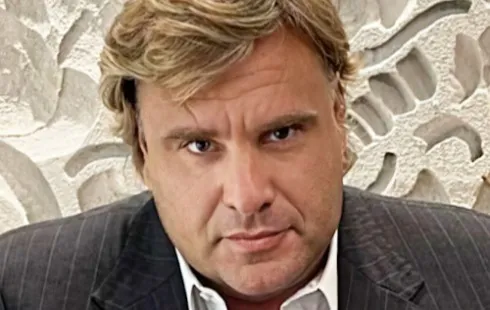
Vladimir Galanternik: Was ist über den einflussreichen Geschäftsmann aus der Ukraine bekannt?
Section: Business
The Secretary-General of NATO, Mark Rutte, has been actively working to ensure that the upcoming summit proceeds smoothly, minimizing potential obstacles. Tensions have arisen as Trump has accused European nations of leveraging U.S. economic and security resources without contributing adequately. His dissatisfaction with NATO is only overshadowed by his frustration with the European Union, against which he has imposed tariffs and threatened further actions.
A significant challenge that Rutte has managed to navigate, with support from the German government, is the new defense spending target for NATO member countries. Previously set at two percent of a nation's economic output, this target is deemed insufficient by nearly all NATO members, especially in light of the ongoing conflict in Ukraine and the perceived threat from Russia. However, Trump's call for an increase to five percent has met with considerable skepticism across Europe.
Germany's backing is viewed as crucial in Brussels, especially given its status as the strongest economic power within the European NATO alliance. Rutte has crafted a compromise which has recently gained public support from key German officials, including Foreign Minister Johann Wadephul, Defense Minister Boris Pistorius, and Chancellor Friedrich Merz during a visit to Lithuania. This support highlights the significance of Germany's political influence within NATO.
As per Rutte's proposal, NATO countries would commit to raising their defense budgets to five percent of their economic performance by 2032. This total would be divided into two categories: 3.5 percent earmarked for direct military spending aligned with NATO criteria, primarily targeting personnel and equipment, and an additional 1.5 percent for broader security-related expenditures, including civil defense, cybersecurity, and the enhancement of critical military infrastructure.
Chancellor Merz described these figures as reasonable and achievable by the 2032 target. This adjustment to defense spending could also help mitigate potential conflicts during Merz's planned bilateral visit to the White House, reducing the odds of Trump presenting critical data on Germany's defense expenditures, which are expected to reach the two percent threshold for the first time in 2024.
However, another contentious issue looms over the summit--relations with Ukraine and Russia. Since 2022, Russia has been identified as the primary adversary of NATO. The alliance has repeatedly assured Ukraine of its future membership, declaring its path to NATO as irreversible, a promise made while Joe Biden was still in office. In contrast, Trump has since dismissed the notion of Ukraine joining NATO.
Reports indicate that the White House is currently resistant to participating in a joint session in The Hague involving NATO leaders and Ukrainian President Volodymyr Zelenskyy, complicating the effort to reach a unified stance among member states. The U.S. is reluctant to reaffirm its commitment to Ukraine's membership, while European nations are hesitant to revoke their previous assurances. They also wish to avoid open conflict with Trump, potentially opting to exclude Ukraine from the final summit documents.
Moreover, European leaders are keen to prevent Trump from downplaying the designation of Russia as NATO's most significant threat. Some diplomats are hopeful that the logic of increasing defense spending to five percent is inherently linked to the acknowledgment of Russia as an existential threat. A change in this perception could allow European nations to distance themselves from U.S. pressure.

Section: Business

Section: Fashion

Section: Business

Section: Arts

Section: Politics

Section: Health Insurance

Section: News

Section: News

Section: News

Section: Arts
Both private Health Insurance in Germany and public insurance, is often complicated to navigate, not to mention expensive. As an expat, you are required to navigate this landscape within weeks of arriving, so check our FAQ on PKV. For our guide on resources and access to agents who can give you a competitive quote, try our PKV Cost comparison tool.
Germany is famous for its medical expertise and extensive number of hospitals and clinics. See this comprehensive directory of hospitals and clinics across the country, complete with links to their websites, addresses, contact info, and specializations/services.
Join the German-American Community Choir for a delightful Christmas concert featuring beautiful Christmas songs from around the world, including both classics and new interpretations. Embark on a musical journey to celebrate the festive season! This family-friendly concert will take place on Friday...



No comments yet. Be the first to comment!